Does It Snow In Scotland? Exploring Scotland In Winter
Scotland’s reputation for unpredictable weather can leave travellers curious about its snowy potential. The simple answer is that it does snow in Scotland in winter, but where and how much is not straightforward.
As a family that loves the white stuff, and has spent more than twenty winters in Scotland, we thought we should share our experience and it does not always involve snow.
Whether you are seeking a skiing adventure or craving the magical snow-covered landscape, we’ve got insights, tips, and first-hand experiences of snow in Scotland.
Trekking The Dream! contains affiliate links and is an Amazon Services LLC Associates Program member. We may receive a commission if you purchase using one of these links. This is at no extra cost to you and helps us to keep our site up and running! Read our privacy policy for more information.

Travelling To Scotland In Winter?
Book car hire from Rentalcars
Find activities with Get Your Guide
Family-friendly accommodation from booking.com
Does It Snow In Scotland?
When thinking of Scotland – bagpipes, kilts, and castles may all come to mind, but Scotland’s landscape also transforms in winter.
Scotland gets snow every year in winter although it may not last long even on the highest peaks. Even as locals we eagerly await a flurry of snow.
Not all parts of this historic country receive the same amount of snow. The mountainous Highlands get the most snow, whereas the lowlands and coastal areas are not so predictable including Edinburgh.
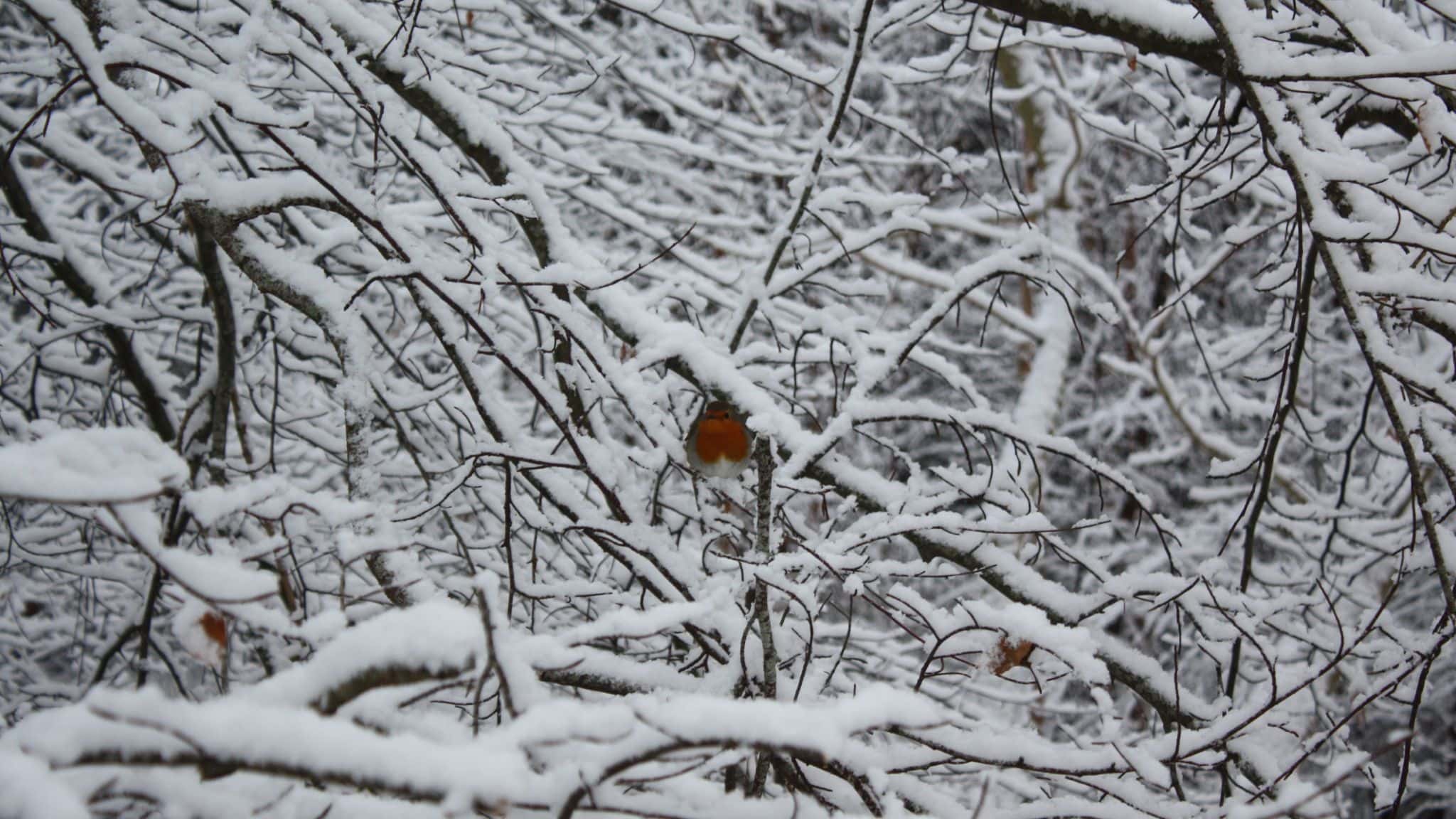
Winter in Scotland
The climate across Scotland varies from mild and wet on the West Coast to cooler and drier in the East. With a drop in temperature in winter, Scotland experiences ice and snow between November and March.
We do, occasionally see snow-capped mountain ranges from as early as September.
While Scotland may be famous for its changeable and wet weather, winter days can be clear blue skies and warm sunshine.
Don’t let Scotland’s winter weather deter you from visiting! Dress in layers for cold and wet conditions and be prepared for temperature drops after dark. Winter is one of the best seasons to visit Scotland, even with kids!
Reasons to Visit Scotland in Winter
There is plenty to see and do as Scotland transforms into a winter wonderland. Despite average daytime temperatures of 4°C and shorter daylight hours, winter in Scotland can be a worthwhile time to visit with a bit of planning.
Winter means your family can enjoy the view of snow-capped mountains, or explore historic castles like Edinburgh and Stirling without the crowds.
Winter also brings other unique opportunities. In remote areas of Scotland, like Galloway Forest Park, you get clear skies for stargazing or for witnessing the Northern Lights with long winter nights. The Cairngorm National Park has a herd of reindeer, which is even more special to see on a snowy day.
Scotland’s festive spirit is in full force in December and January with Christmas markets, Hogmanay (New Year’s Eve) and Robert Burns celebrations suitable for families in most cities and towns.
You can even pencil in a ski trip for when snow does fall on higher ground.
No matter what you choose in Scotland, you can warm up next to a fire, with traditional comfort food like haggis and stews in good company.
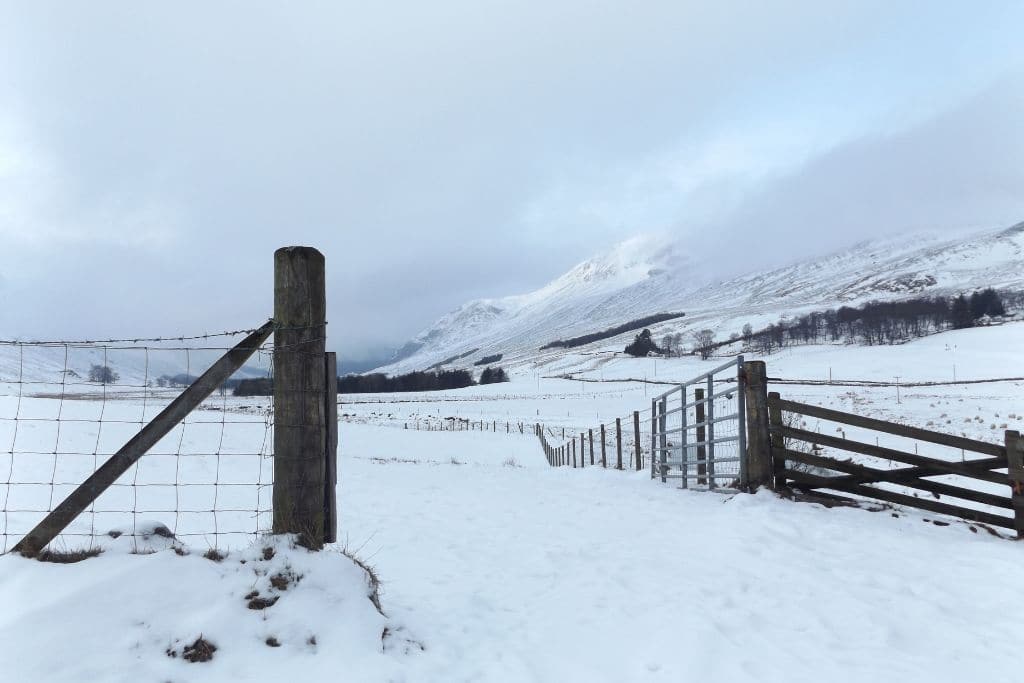
How cold is Scotland in Winter?
The temperature across Scotland can vary dramatically depending on where and how high above sea level you are. Inland rural locations can be well below freezing, while coastal regions may remain above zero.
In the winter, temperatures can drop significantly, with averages ranging from 4°C in the lowlands to much colder in the Highlands, where it can plummet well below freezing. Temperatures can reach as low as -30°C in the Highlands during extreme cold snaps, usually accompanied by plenty of snow!
Whilst January and February tend to be the coldest months, winter temperatures in Scotland can feel much colder when they coincide with wind and rain.
Scotland is not too cold if you are prepared for various temperatures, by dressing appropriately for winter weather.
Are winter days short in Scotland?
Most of Scotland gets about seven hours of daylight in the winter, although the northern islands of Shetland and Orkney have less than that.
With the sun low in the sky, long hours of darkness and a drop in temperature, days can feel short in Scotland. Make the most of your day by starting it early.
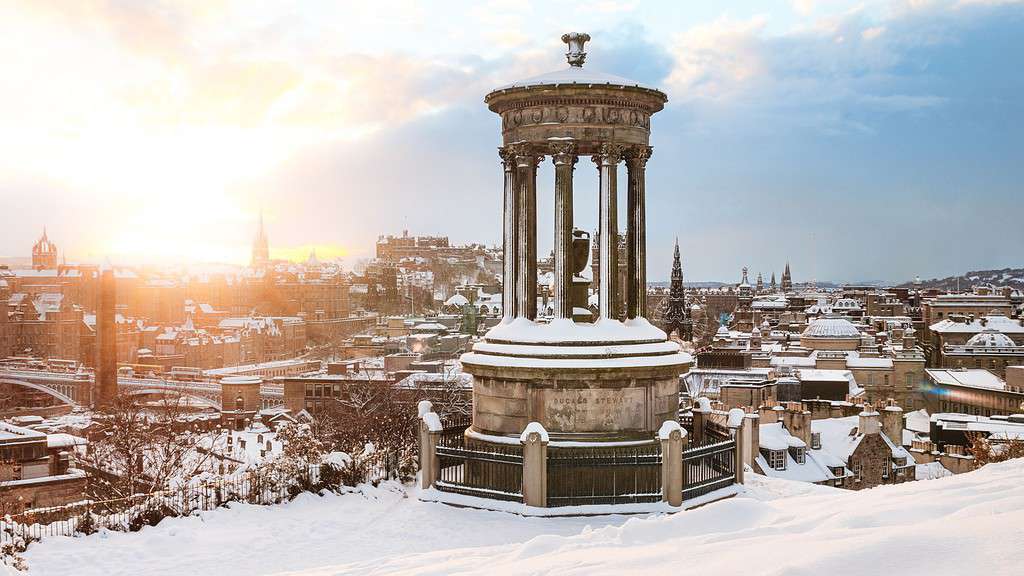
Snow in Scotland
So, you’ve discovered it snows in Scotland. Now let’s learn when, why, how much and where it can be found.
What months does it snow in Scotland?
Snowfall in Scotland is most common during the winter months, typically from December through February. It can start as early as November and linger into May.
The frequency and intensity of snowfall varies across regions, with the Highlands receiving the most consistent snow. Although snow is commonly seen in winter, it may only be on the mountain tops!
February is the coldest month in Scotland and has the most reliable snowfall.
Weather forecasts are not the most accurate, so cities often wake up to snowy surprises, while the mountainous areas get enough snow by January to offer winter sports (assisted with man-made snow).
Scotland’s ever-changing weather means that snowfall can be unpredictable. A winter visit to Scotland does not guarantee seeing snow.
Why does it snow in Scotland?
Scotland experiences snowfall in winter due to its northern latitude and proximity to the Atlantic Ocean.
Scotland has less direct sunlight during the winter months leading to colder temperatures, increasing the likelihood of snowflakes forming.
How much does it snow in Scotland?
Snow in Scotland is seasonal, with an average of 38 days of fresh snowfall annually. Despite this, it does not always settle in populated areas.
The amount and frequency of snowfall differ’s across the country, with the most falling on higher ground in the Highlands. Aberdeen is the snowiest city.
Some areas can see impressive flurries of fresh snowfall for more than 60 days of the year. It may be less frequent in the lowlands, such as Edinburgh, and sometimes even absent in milder winters.
The snowiest region in Scotland
The Scottish Highlands cover a large area of mainland Scotland and surrounding islands. Due to its higher elevation, the Highlands receive the most snowfall in winter.
Not surprisingly, snow also lays on the ground the longest in this region, making it the best area to see snow from as early as late September into spring on mountain tops!
If you visit between December and February you might be lucky enough to experience a snowy stay.
When is The Scottish Ski Season?
Ski season can be very hit or miss in Scotland, with most resorts and skiers eagerly waiting for slopes to open from the onset of winter.
Typically the Scottish Ski season runs from late December to March, depending on snowfall and weather conditions. The peak season often occurs between January and February when the ski resorts receive the most consistent snowfall or conditions to make it!
There are five ski resorts across Scotland with Glenshee, Lecht, Cairngorms, Nevis Range and Glencoe to choose from. Opening and closing dates vary depending on snow levels, so check before heading out.
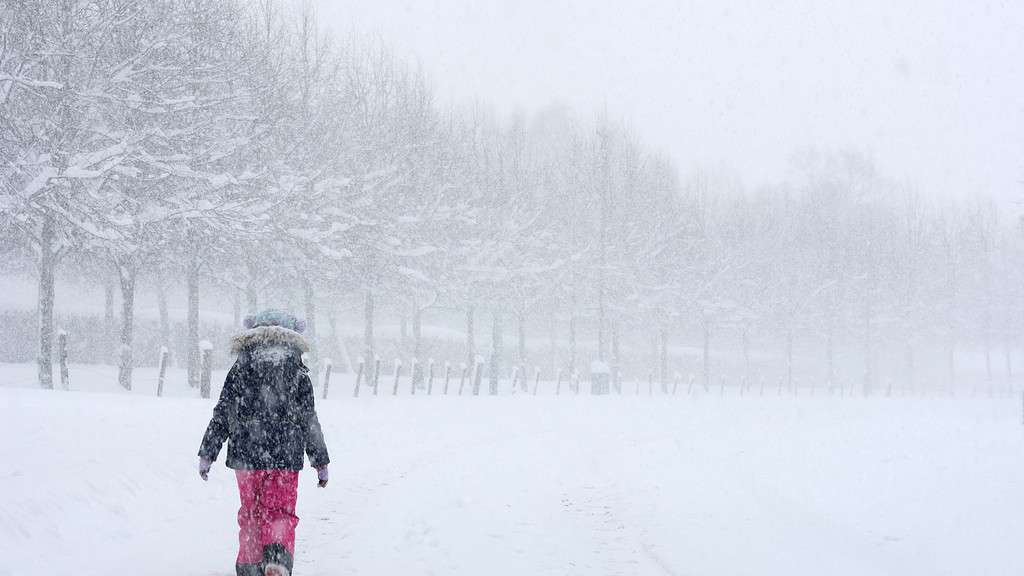
The Best Places to Find Snow in Scotland
Scotland’s landscape transforms in winter with snow, frost and ice, offering opportunities for snow seekers to embrace the magic of winter. From the Highlands to the Borders, here are the best places to find snow in Scotland:
❄️ Cairngorms National Park is known as the snowiest place in the United Kingdom. Located in the heart of the Scottish Highlands this is the best place to find snow in winter. Year-round snow can be seen on the highest peaks in the area, including Ben Macdui and Cairngorm. The area offers fantastic facilities for winter sports in Glenshee and Lecht or spot a large herd of reindeer that roam freely.
❄️ Orkney & Shetland Islands are remote islands off of Scotland’s north coast. As well as stunning landscapes, these islands are one of the snowiest places in Scotland, with an impressive average snowfall of 60 days per year.
❄️ Glencoe has dramatic scenery, including the iconic Three Sisters, that is made even more impressive with snow in winter. Located in the western Highlands, Glencoe Mountain Resort is the oldest in Scotland and offers challenging skiing and snowboarding terrain, winter hiking, and ice climbing opportunities.
❄️ Nevis Range, near Fort William, is home to Aonach Mor, Scotland’s eighth-highest mountain. The Nevis Range Mountain Resort is a hub for winter sports and boasts a gondola ride that provides access to stunning snow-covered slopes. The area receives consistent snowfall, making it a reliable destination for those seeking winter adventures from late December until March.
The highest mountain in Scotland, Ben Nevis, is located here and while climbing in winter is possible, you’ll need mountaineering skills.
❄️ Loch Lomond & The Trossachs National Park is accessible in less than two hours from Glasgow or Edinburgh, offering winter scenes. The lochs, forests, and hills are transformed into a snowy wonderland in winter where visitors can enjoy cross-country skiing, snowshoeing, and winter hiking.
❄️ The Scottish Borders may not receive as much snowfall as the Highlands, this region offers charming landscapes, historic towns, and the possibility of enjoying a peaceful winter getaway. Kelso, Melrose, and Jedburgh are just a few of the picturesque towns to explore with the chance of snow.
❄️ The East Coast of Scotland experiences cold, dry winters perfect for significantly more snow than the West Coast. Aberdeen is the snowiest city in Scotland, and coastal towns like St. Andrews and Dundee may also get a blanket of snow great for winter walks along the Angus and Fife coastline.
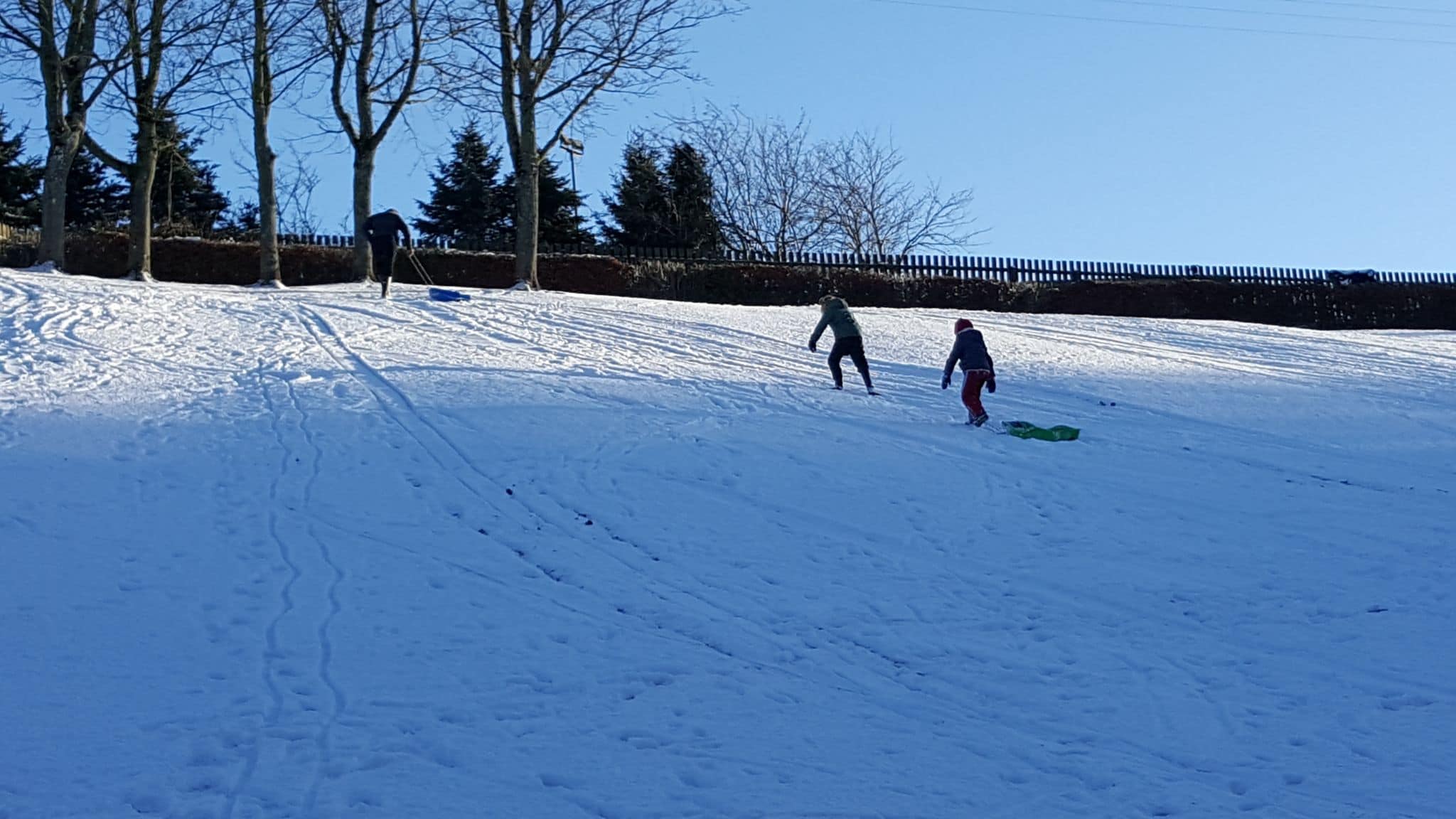
Our Snowy Scottish Adventures
We love to wrap up warm and enjoy some winter family adventures in Scotland. Snow is a big advantage of living in Scotland in winter that our family enjoys.
Snow encourages us to get out for a walk more in winter with our kids eager to build snowmen or throw snowballs. Being the first to lay footprints in fresh snow or identifying animal prints adds to the fun when we are out and about with kids.
With a large selection of Scottish hills, sledging is a great, free activity in the winter. In recent years this has been replaced with learning to ski at Glenshee. And to warm up after enjoying our snowy Scottish adventures, it’s always a round of hot chocolate and marshmallows.
You can also find pop-up ice rinks in cities for family ice skating. We are also fans of Edinburgh Christmas Market.
Tips for Visiting Scotland in Winter
Winter can be a great time for families to visit Scotland, here are our tips so you are prepared:
- Check the weather forecast and be prepared to change plans if conditions change quickly.
- Pack warm clothing for layering with waterproof outerwear for Scotland’s varied climate.
- Plan activities that suit the season, such as skiing, winter hikes, or festive markets.
- Be aware of challenging road conditions if you are driving, especially with snow and ice.
- Winter days in Scotland have shorter daylight hours than in summer. Plan your day to what interests you most, and leave other activities for your next visit.
Does it Snow in Scotland: FAQs
Scotland does get snow, but whether you’ll see any is anyone’s guess. Here are a few of the most frequently asked questions about winter and snow in Scotland.
Snowfall does happen in Scotland, with an average of 38 days per year. This may be contained to mountain tops depending on the amount and frequency of snow in the region.
Snowfall is not uncommon in Scotland in December, particularly in the mountainous Highlands. Snow can add to Scotland’s charm during the festive season, especially at the many Christmas markets.
Snowfall occurs in Edinburgh most winters, with an average of 7 days. Between December and February the amount of snow can vary from a dusting to several worthy amounts.
Scotland can see snowfall at Christmas depending on the region. It is not common for the whole country to have a white Christmas, but your chance is higher in the Highland area.
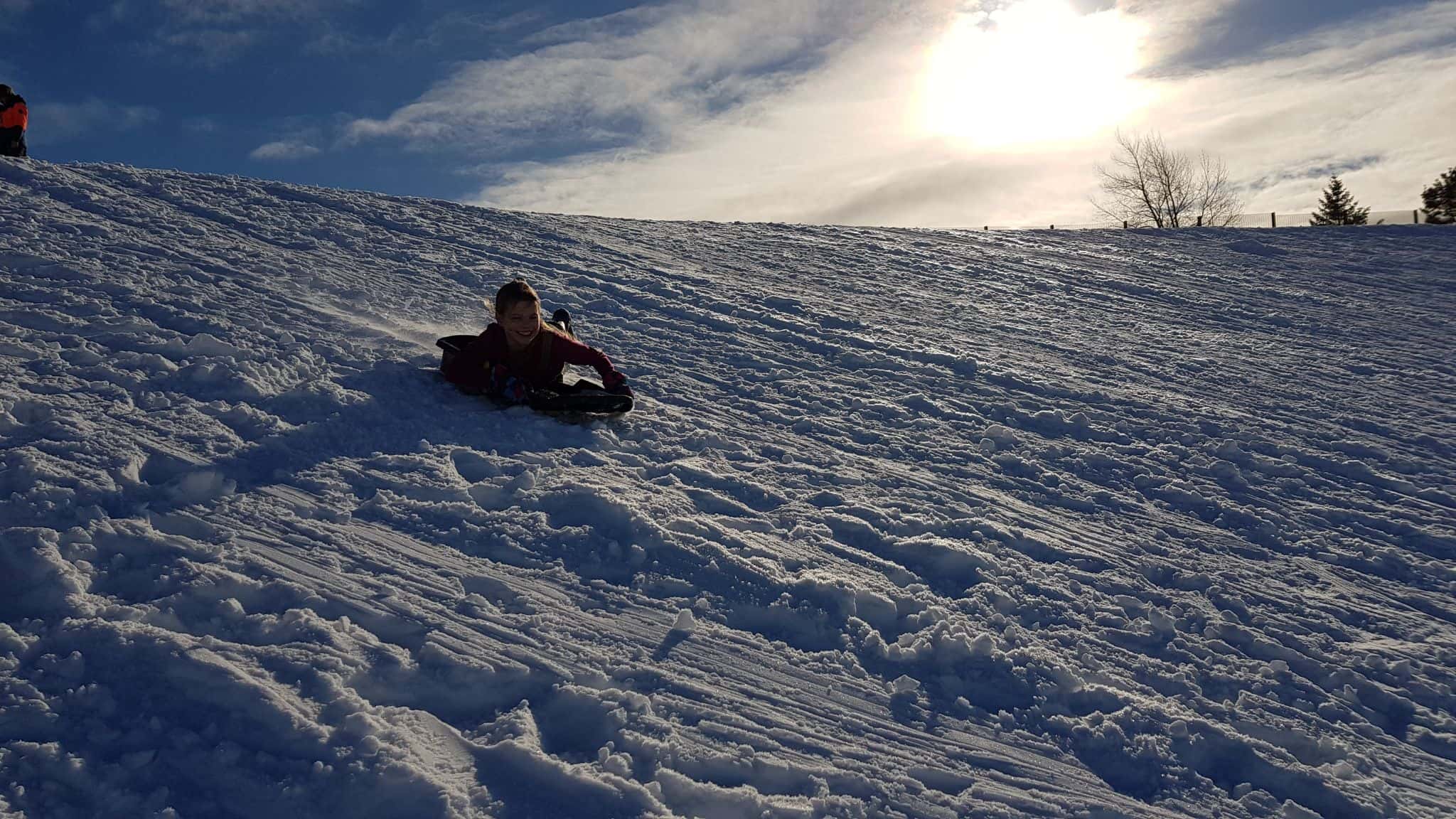
Conclusion: Does it snow in Scotland?
Scotland’s diverse landscape and varied climate means it does snow in winter. While the amount and when it falls is unpredictable, the country is transformed when it does snow.
Even without snow Scotland is worth visiting in winter. Wrap up and embrace the prospect of snow in winter to create unforgettable memories in Scotland.
Read more about Scotland
